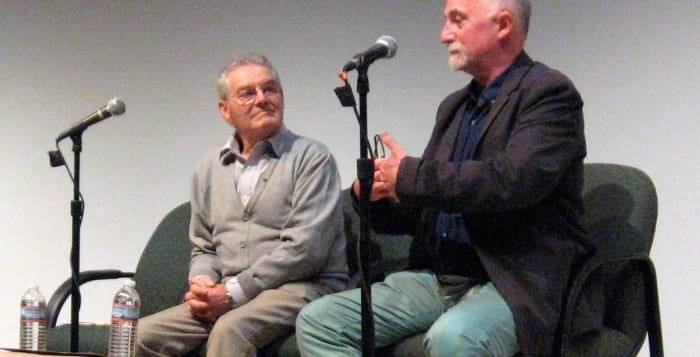When we think about aging, chronological age comes to mind first. For many, the perceived ideal age is around 25. My wife refers to her birthday every year as the “X anniversary of her 25th birthday.” After 40, we are on the downslide, right? Not so fast. Age may be more than the ticking of the clock; it is less about time and more about telomere length, brain volume and heart age, or what we call “biological age.” We may be too obsessed with chronological age, when we should be focused on biological age and how we can alter it for the better.
According to a recent study, we need to lift weights twice a week to see a potential beneficial effect on the brain. I will discuss this further.
In another study, results demonstrate that aging may be based primarily on environment and secondarily on your genes, 50 percent and 25 percent, respectively (1). This study used identical twins and fraternal twins in Scandinavian countries. Frankly, I did not realize just how much of an impact environment has on aging. Gene influence does increase after the age of 60, though. Since much of aging is based on environment, it means that there are risk factors that can accelerate the aging process and other factors that may slow it down.
What is an aging accelerator?
Sedentary activity, an oxymoronic term, can lead to weight gain and chronic diseases, so it’s no surprise that this can also lead to a shorter life span. In a recent study, those who spent more sedentary leisure time on screen-based activities were more likely to have reduced telomere length (2). Telomeres are repetitive sequences of DNA found at the ends of our DNA. They are similar to caps on the ends of shoelaces; they prevent our DNA from fraying. When telomere length is reduced, it can result in premature aging. In this study, for every sedentary hour, there was a 7 percent chance of significant reduction in leukocyte (white blood cell) telomere length. According to the authors, shortened telomere length has been associated with increase morbidity (disease) and mortality.
What is a consequence of premature biological aging?
One of the most feared diseases as we age is dementia, specifically Alzheimer’s dementia. In a study, a shortened telomere length was associated with a greater than one-third increased risk of Alzheimer’s disease (3). This study suggests that shortened telomere length is not just a biomarker; it may be involved in the actual cause of Alzheimer’s. The authors warn that there is no clear method to measure telomere length and to be wary of any company that offers this service.
What is the significance of heart age?
According to a CDC study, heart age may actually matter more than chronological age (4). Heart age is defined here as the cardiovascular risk profile that determines one’s vascular (arteries and veins) health. Researchers used the Framingham Risk Score calculator to evaluate biological age based on heart health. The score predicts the 10-year risk of developing cardiovascular disease. A higher score results in increased risk and accelerated biological age, while a lower score results in a lower risk and lower biological age than actual age. This scoring calculator uses age, BMI, systolic (top number) blood pressure, sex and whether you are treated with drugs for high blood pressure and diabetes. The calculator is here: https://www.cdc.gov/vitalsigns/cardiovasculardisease/heartage.html.
Systolic blood pressure seems to have the most effect, with a systolic blood pressure of 125 mmHg resulting in a neutral effect. Only about 30 percent of patients have a heart age equal or below their actual age, with the mean biological age 7.8 years above actual age for men and 5.4 years above for women. Unfortunately, this calculator does not take into account lifestyle modifications, such as diet and exercise.
So what are the effects of diet and exercise?
The explorer Ponce de Leon spent much of his life searching for the fountain of youth. We may have found a modified fountain in the form of cardiovascular exercise, weight lifting and the Mediterranean-type diet. These are factors that may make your biological age significantly lower than your actual age.
Don’t resist resistance training
We are not talking about lifting heavy weights, but rather the frequency of light weight lifting. In a recent study, lifting weights two times a week had a significantly better effect on the number of white matter lesions in the brain and on gait speed than lifting one time a week or less (5). White matter helps the brain make connections, carrying information from one part of the brain to another. Lesions may impede this process. This was a well-designed, though small, one-year, randomized controlled trial, the gold standard of studies, with 155 female participants. Patients were divided into three groups: light upper and lower body weight lifting twice a week, the same regimen once a week, or a stretching and balance regimen.
How can exercise elongate cell life?
In another study, exercise appeared to prevent or reduce the risk of shortened telomeres. Telomeres are important for protecting the DNA and, ultimately, the cell (6). There were four different categories of exercises surveyed. If respondents said yes to each category, there was an exponentially greater chance that they would not have very short telomeres. The categories included walking, running, walking/riding a bike to work or school, and weight lifting. If a participant was involved in one category in the previous month, there was a 3 percent reduced risk of shorter telomeres, whereas participants who were involved in all four categories had a 59 percent reduced risk of having very short telomeres. This greatest impact was seen in adults between ages 40 and 65.
How about diet?
In the WHICAP study, better compliance with a Mediterranean-type diet slowed the process of brain atrophy (7). According to the researchers, this was equivalent to a five-year reduction in biological age. There were nine components to the diet. The most interesting part was that increased fish and decreased meat consumption was most beneficial.
What does increased fish intake mean? It is less than you would think — three to five ounces a week total. The components in fish that may contribute to this positive effect are omega 3 fatty acids, B vitamins, vitamin C and astaxanthin, a carotenoid. This study involved 674 elderly adults who lived in New York City. The researchers measured brain volume by MRI. Though it was not studied, the authors note that brain atrophy is associated with cognitive decline. So avoiding or slowing brain atrophy should be an imperative.
The moral of the story for aging: Try not to obsess over something that you can’t change, your chronological age. Instead, focus your energies on biological age, which is more pliable and may respond to lifestyle modifications.
References:
(1) Hum Genet. 2006;119(3):312. (2) Mayo Clin Proc. 2015;90(6):786-790. (3) JAMA Neurol. 2015;72:1202-1203. (4) Morb Mortal Wkly Rep. online Sept. 1, 2015. (5) J Am Geriatr Soc. 2015;63(10):2052-2060. (6) Med Sci Sports Exerc. 2015;47(11):2347-2352. (7) Neurology 2015;85:1-8.
Dr. Dunaief is a speaker, author and local lifestyle medicine physician focusing on the integration of medicine, nutrition, fitness and stress management. For further information, go to the website www.medicalcompassmd.com or consult your personal physician.









